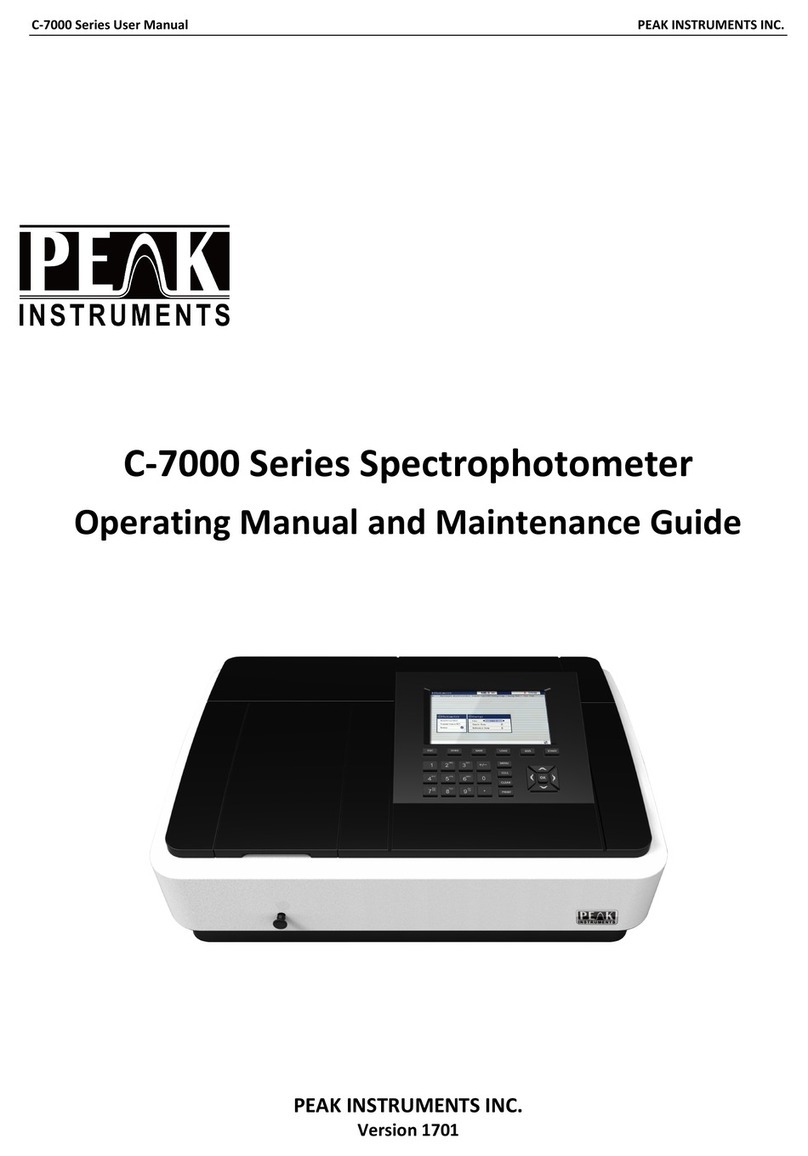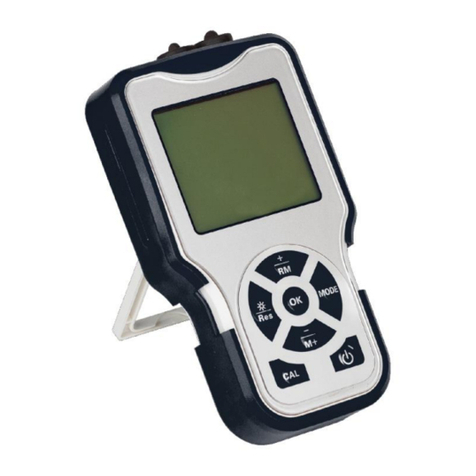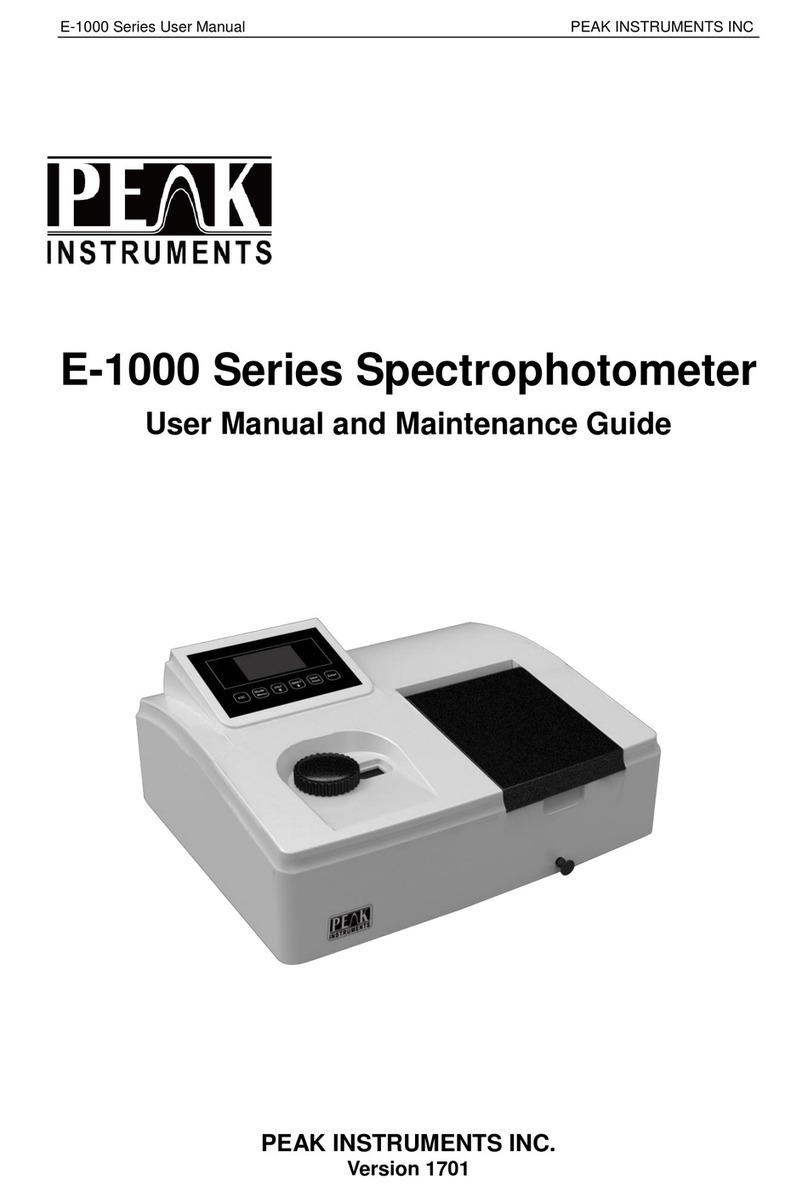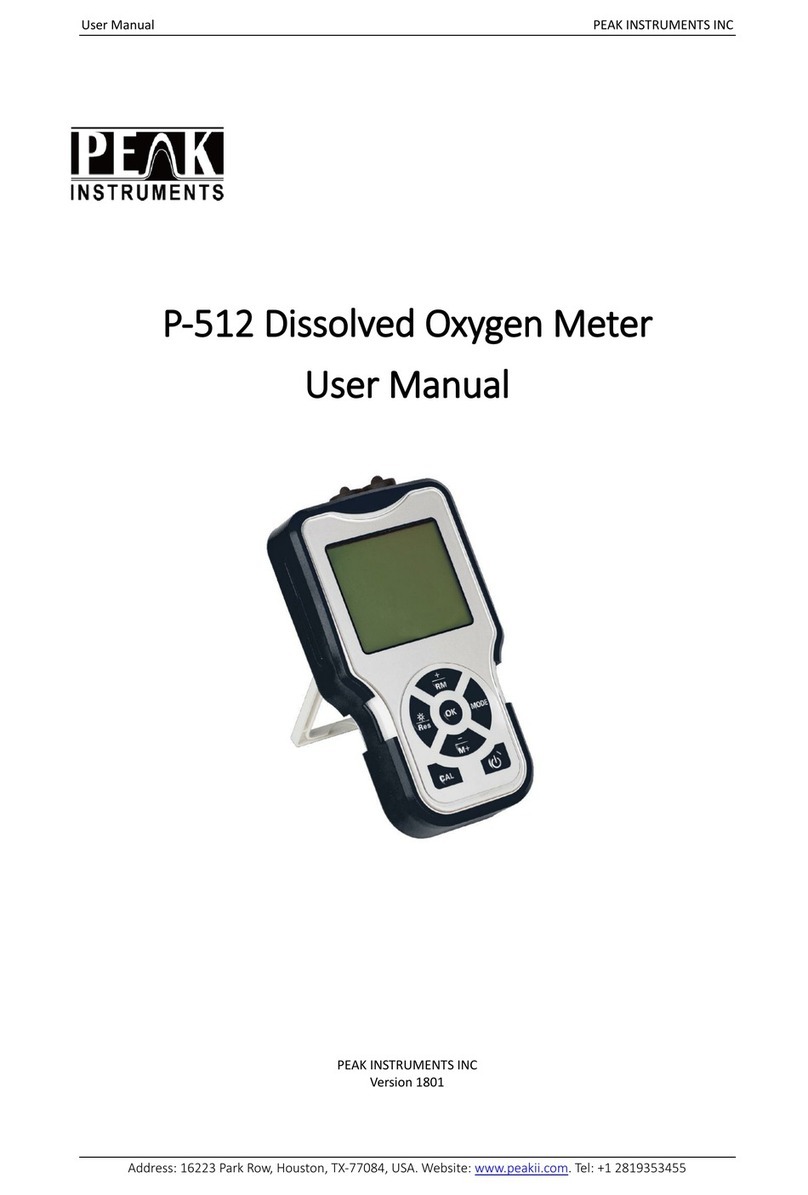
User Manual PEAK INSTRUMENTS INC
CONTENTS
I. General Information ........................................................................................ 1
1. Safety notes .............................................................................................. 1
2. Product overview ...................................................................................... 2
2.1. Basic operating principles ................................................................. 2
2.2. Performance indicators definitions .................................................... 4
2.3. Applications ...................................................................................... 6
2.4. Using conditions ............................................................................... 6
II. Product Features and Installation................................................................... 7
1. Features ................................................................................................... 7
2. Technical data .......................................................................................... 8
3. Main functions ........................................................................................... 9
4. Structure introduction .............................................................................. 10
4.1 Top view of structure: ....................................................................... 10
4.2. Bottom view of structure: ................................................................ 10
4.3. Light path diagram .......................................................................... 11
4.4. Important part of the instrument ...................................................... 11
5. Instrument installation ............................................................................. 13
III. Key Definitions and Basic Operations ......................................................... 14
1. Panel schematic diagram ........................................................................ 14
2. Button function descriptions .................................................................... 14
3. Basic operations ..................................................................................... 15
IV. Programs .................................................................................................... 15
1. Instrument self-test ................................................................................. 15
2. Photometric masurement ........................................................................ 17
3. Quantitative measurement ...................................................................... 21
3.1. Build standard curve ....................................................................... 21
3.2. Standard sample measuring ........................................................... 22
3.3. Sample test ..................................................................................... 23
3.4. Open standard curve ...................................................................... 23
4. Time scan (Kinetic) ................................................................................. 24
4.1. Function description ........................................................................ 24
4.2. Time scanning parameters set ........................................................ 24
4.3. Data test ......................................................................................... 25
4.4. Data list ........................................................................................... 25
4.5. Slope calculation ............................................................................. 26
5. Wavelength scanning .............................................................................. 26
5.1. Function description ........................................................................ 26
5.2. Set scanning parameters ................................................................ 26
5.3. System baseline ............................................................................. 27
5.4. Create a user baseline (corrected blank) ........................................ 28
5.5. Begin testing ................................................................................... 28
5.6. Peaks and valleys ........................................................................... 29
5.7. Data list ........................................................................................... 29
6. Multi-wavelength test .............................................................................. 30
6.1. Function description ........................................................................ 30































